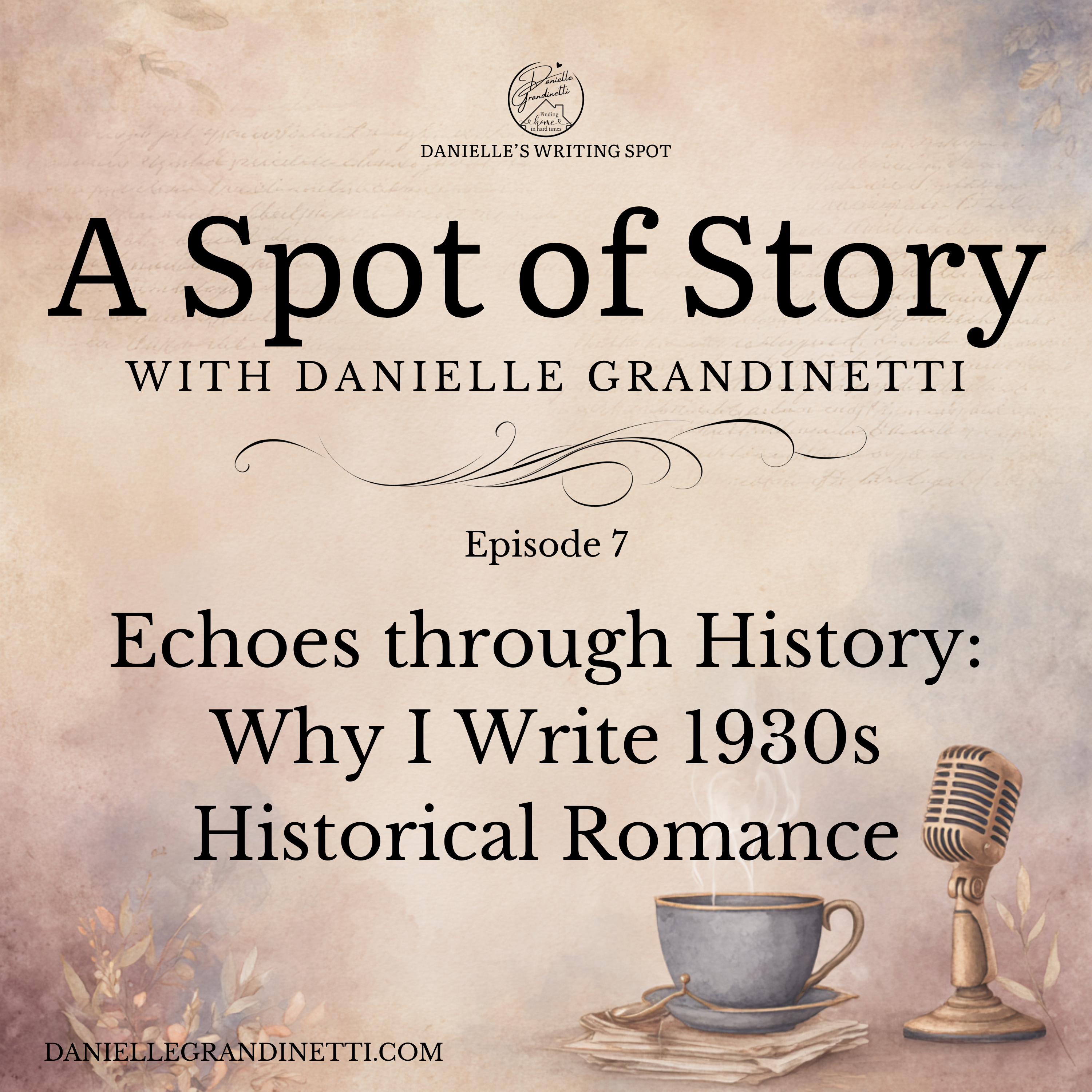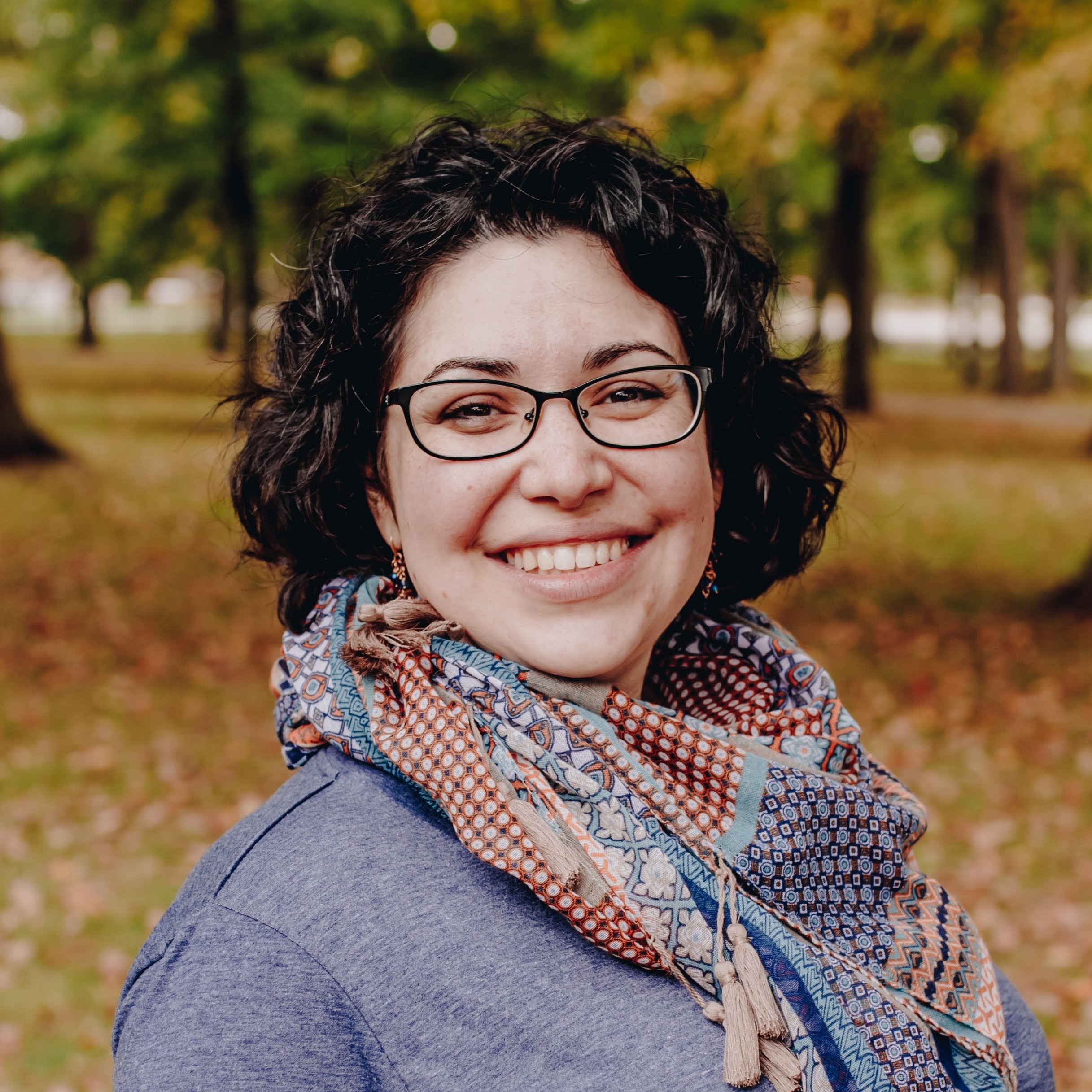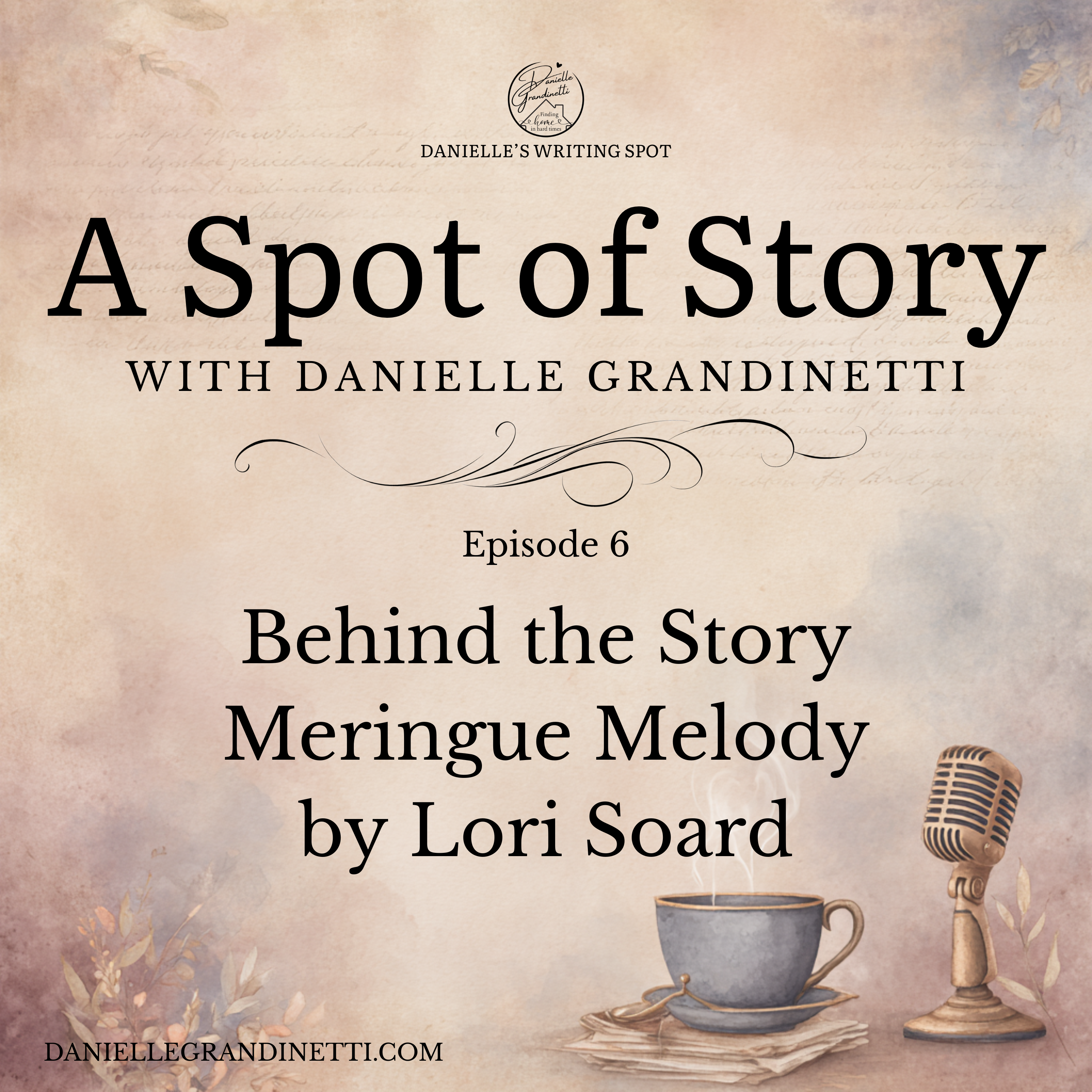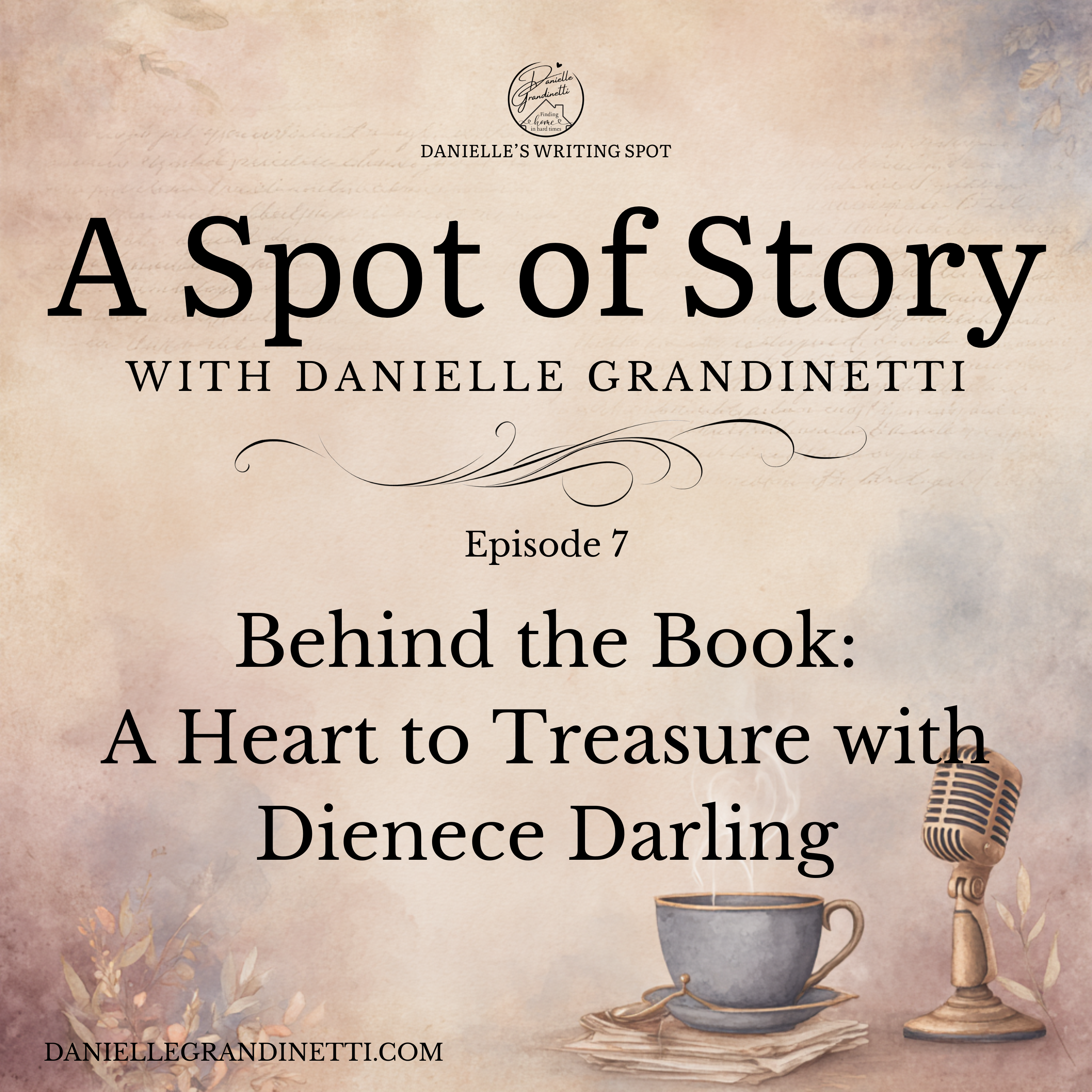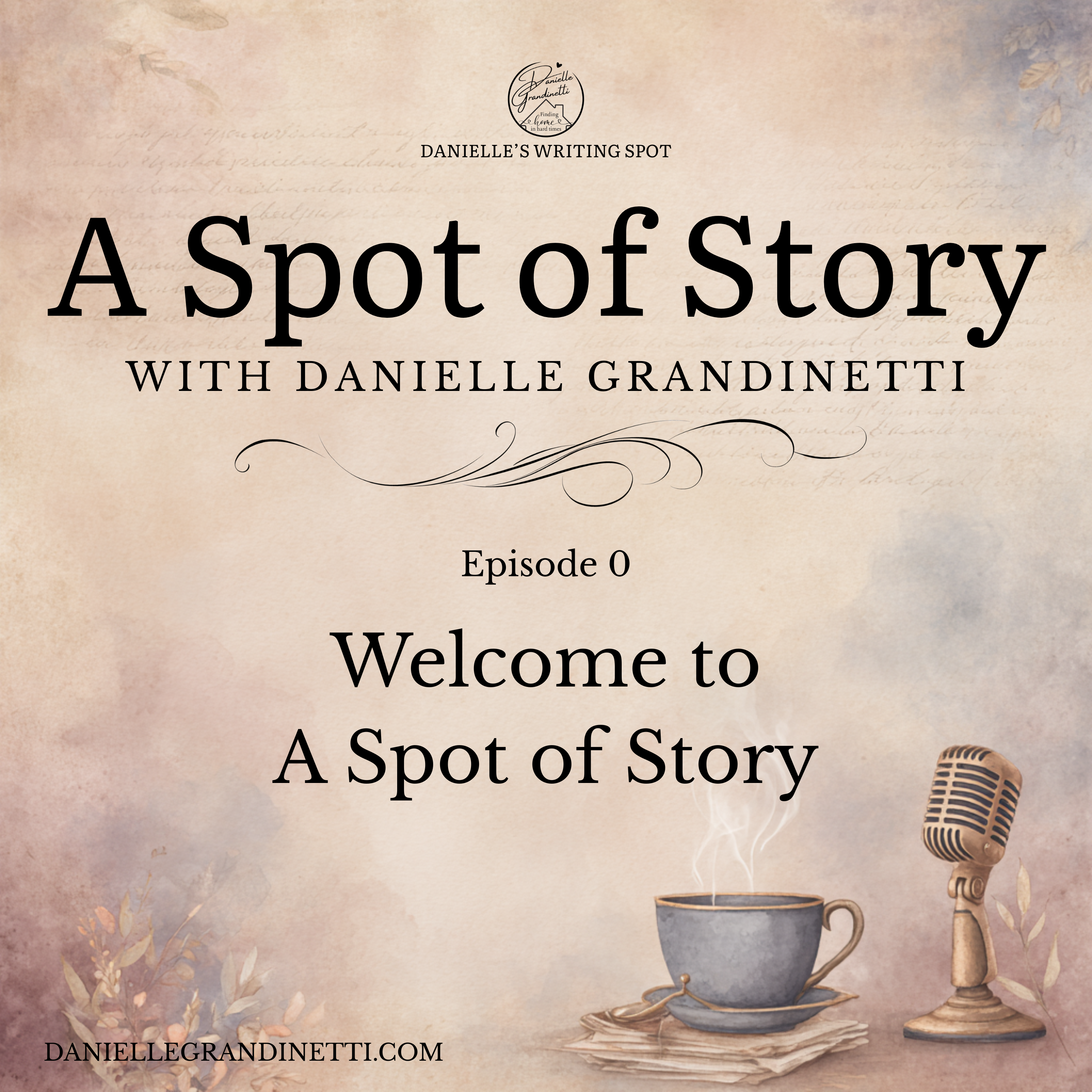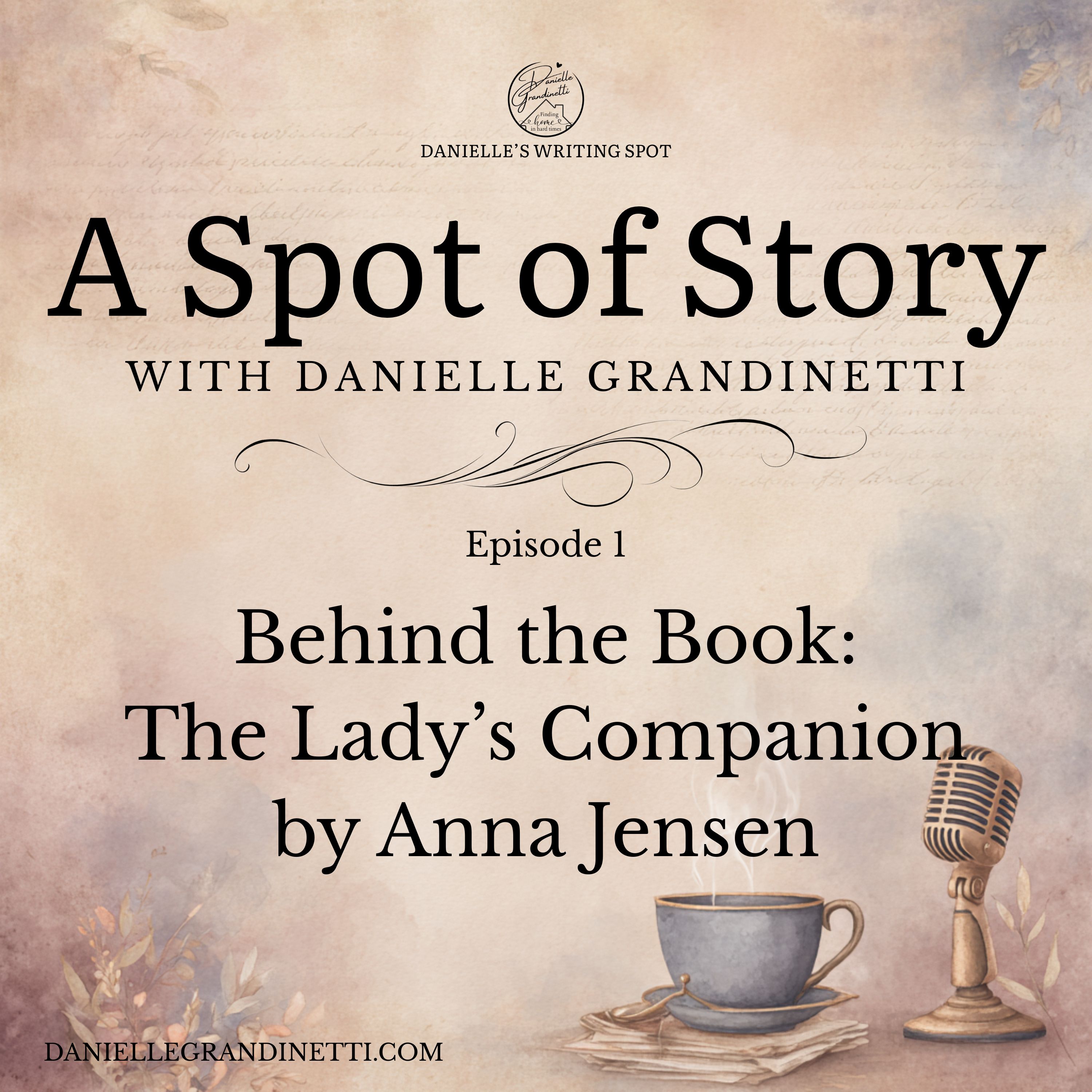Episode Transcript
Danielle Grandinetti: [00:00:00] Welcome to A Spot of Story with Danielle Grandinetti. Cozy up with your favorite beverage as we chat about sweet romance, thrilling suspense, and fascinating history. Perhaps you'll find your next read in one of these stories.
On this episode of A Spot of Story — Echoes of History, we are stepping back into the 1930s to explore why I love this decade so much.
When I was a pre-teen, my paternal grandmother came to live with us. I have fond memories of summers spent outside in our backyard—my grandma on the swing, me on the monkey bars, and her telling me story after story. You see, my grandma is Italian and grew up in one of Chicago's Italian neighborhoods during the 1920s and [00:01:00] 1930s.
I still remember her stories, including firsthand accounts of what it was like to live in Al Capone's Chicago. As fascinated as I was with those decades, I hadn't planned to write stories set in that particular decade. However, when I received my first rejection for the book now titled A Strike to the Heart, everything changed.
At the time, it was a contemporary romantic suspense novel—one of my favorite genres to read—but the editor explained that while my writing was good, something was missing. Then, during the pandemic, I learned that Wisconsin dairy farmers were dumping their cows’ milk because the supply chain had been disrupted.
And I wondered, had that happened before? Well, it had—in the 1930s.
Setting that particular romantic suspense story in the 1930s was like taking a black-and-white film and adding technicolor. Everything made sense in [00:02:00] vibrant fascination. It reminded me of how much I loved my grandma's stories. And I knew I never wanted to stop writing stories set in this decade.
Because I think of my stories as romantic suspense or romantic mystery set during the 1930s, that allows me to use the historical details as if they themselves are characters in a book.
One of my favorite sources for story fodder is archive newspapers from the time. The 1930s also witnessed numerous technological advances, which make it seem a lot more modern than many historical tales set during the 1800s.
Most of all, I love writing the 1930s because it was a decade filled with desperation. Since I love telling stories of finding home and hope in hard times, it provides the perfect backdrop against which to show the light and love of Jesus.
Because no matter how dark the world gets, there's still a happily ever after to be found in [00:03:00] God. And I hope this shines through in my stories.
The 1930s, if you're in the United States, has the Great Depression. The 1930s, if they're set in Europe, has pre–World War II. Who knows? Maybe I'll set stories outside of those two continents. We'll see. But for now, writing Midwest stories centered around the Great Depression and European stories set around the growing trouble that will turn into World War II is keeping me quite busy.
If you love small-town mystery against the backdrop of the desperation that was beginning in the early 1930s, my Harbored in Crow's Nest series is a perfect example of the way the medical advances made changes within [00:04:00] the decade.
If you love rural settings and are curious about the technological advances that happened or about those milk strikes, the Unexpected Protectors series is a great example. If you just love Christmas stories, my Christmas Cabin series is basically Christmas in the North Woods.
And if you'd like to travel across the pond, check out my Our House books. They're standalone romances within the Our House multi-author collections.
And finally, next year, I will be kicking off a brand-new 1930s historical romance series centered around a collection of female journalists headquartered in Chicago. I'll be tackling a lot of the historical events that happened during the 1930s—from Prohibition to the [00:05:00] presidential election, from the early 1930s Olympics, which take place in Lake Placid and Los Angeles, to the later 1930s Olympics in Berlin.
So much to cover! There's the Dust Bowl, the exposition that happens in Chicago—so many fascinating details to dive into, especially from a reporter's perspective. So I hope you'll join me next year for that.
The first book and the prequel are both up for pre-order at the time of this recording.
My goal in writing the 1930s is truly to bring that decade to life. It has become more and more my decade. I love it. The details are fascinating, and to be able to place fictional characters into a real time in history—a time when perhaps our grandparents, parents, or great-grandparents lived—lets me show what life was like in that [00:06:00] particular decade.
It brings such joy to me to show, within the pages of my stories, the men and women who lived during that decade—people who modeled resistance and resilience, taking really hard circumstances and making the most of them. Were they perfect? No. But neither are we.
And to be able to show the hope that comes from having survived some of the darkest days in United States and world history—it shows that perhaps we can survive our own dark days as well.
So thank you for joining me in my journey for why I write 1930s stories. I hope you'll pick up one of my books as I bring that particular decade to life.
Thank you again for joining me for this journey into the past. You can find additional resources, including the links to the [00:07:00] books and series mentioned in this particular podcast, as well as the show notes on the episode page.
Danielle Grandinetti: Thank you for listening to A Spot of Story with Danielle Grandinetti. We hope you enjoyed today's conversation. Let us know by leaving a comment below and be sure to subscribe so you don't miss an episode. Discover more information about today's book by visiting A Spot of Story online at daniellegrandinetti.com/podcast.
Happy reading.
